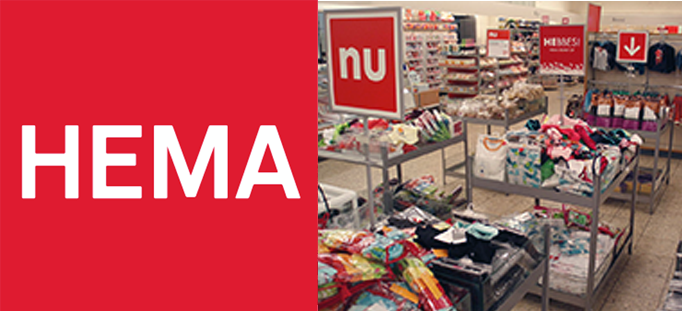
For 88 years HEMA’s low prices have made this Amsterdam-based housewares discount chain a favorite of the allegedly frugal Dutch. At home its shops remain the ubiquitous, go-to places for just about anything. But as HEMA (the name is an acronym for Hollandsche Eenheidsprijzen Maatschappij Amsterdam — Dutch Standard Prices Company Amsterdam) heads into its ninth decade, it begins to face some hurdles. Market saturation and stiff competition from even-lower-price rivals is pressing the company to seek growth abroad, particularly in the U.K. This means opportunity if HEMA can catch on among Britons, but there is some risk too, observers say, given the company’s limited experience managing an international empire.
HEMA’s first British store, a 225-square-meter (about 2,420 square feet) shop at the Victoria Place Shopping Centre, next to London’s Victoria Station, opened this past June. Stores in the London boroughs of Kingston and Bromley are to follow shortly.
HEMA, founded in 1926, remains a Dutch retail fixture — one in three Dutch boys and one in five Dutch women wear HEMA underwear, and every tenth home uses HEMA stationery, according to the company. But how well all of that will translate into English looking ahead is the question. Less comprehensive than Swedish home-furnishings giant Ikea, less quirky than Danish variety newcomer Tiger, and a tad more expensive than Poundland and other U.K. pound stores (the British equivalent of the U.S. dollar store), HEMA will have its work cut out before it can establish a distinct identity in the increasingly crowded British discount market.
Though HEMA has enjoyed some success in Belgium and to a lesser extent in France, a campaign in Germany failed to fly, according to analyst Denise Klug, of Planet Retail, a European retail consultant firm. HEMA’s stocking of only private-label goods and its locations in just a handful of obscure towns made it hard for the chain to become familiar to Germans, Klug says. Currently, the chain operates nearly 700 stores across the Netherlands, Belgium, France, Germany, Luxembourg, Spain and the U.K.
Meanwhile, deep discounters at home keep cutting into HEMA’s -traditional market, says Tom Muller, an analyst at Amsterdam-based investment bank Theodoor Gilissen. As a custom, HEMA locates its stores on major shopping streets. A formidable Dutch upstart called Action now has about 400 stores, most of them in the Netherlands, and most of which opened within the past 15 years. Action’s cost structure is a tough challenge to HEMA, because Action stores are smaller, employ fewer workers per square foot and are typically located on cheaper streets, according to Muller. Sure, HEMA is noted for service, but high-cost employees are not needed to sell low-cost items, and shoppers would probably forgo a sales clerk or two if that meant they could hold onto a bit more of their cash, Muller argues.
“The name of HEMA stood for quality and a relatively cheap price,” said Muller. “The name is still very good, but when your price is €2 and some other shop is selling for €1, then you have a problem.” Now HEMA must find a new focus, he asserts. “They are known for some of their quality items, like textiles and other household things, but they have to either broaden out to other items or take their prices to lower levels. I think they have to more or less change their company or their positioning in the market,” he said.
There are signs that the company is taking measures to trim costs. In March HEMA told suppliers that it planned to begin paying them in 120 days rather than 90, as had been the practice. An even tougher pronouncement involved pressing those suppliers to give back 3 to 5 percent of the HEMA-related revenues they had earned the previous year.
Then, too, at this point HEMA’s owner, a $6 billion U.K. private equity firm called Lion Capital, may be starting to get impatient. Lion, which specializes in consumer brands, bought HEMA in 2007 from Maxeda Group, a Dutch retail firm controlled by U.S. buyout firm Kohlberg Kravis Roberts for a reported €1.1 billion ($1.5 billion). Lion then put HEMA on the block in 2010 but pulled back the following year when no one was willing to proffer the €1.5 billion price.
Lion usually sells its assets after one to six years. But having already kept HEMA on its books for about seven years and also having given the chain a €900 million capital infusion last year, Lion may now be eager to see a bit more for its trouble than just a stock of pink frying pans or rabbit-shaped teapots.